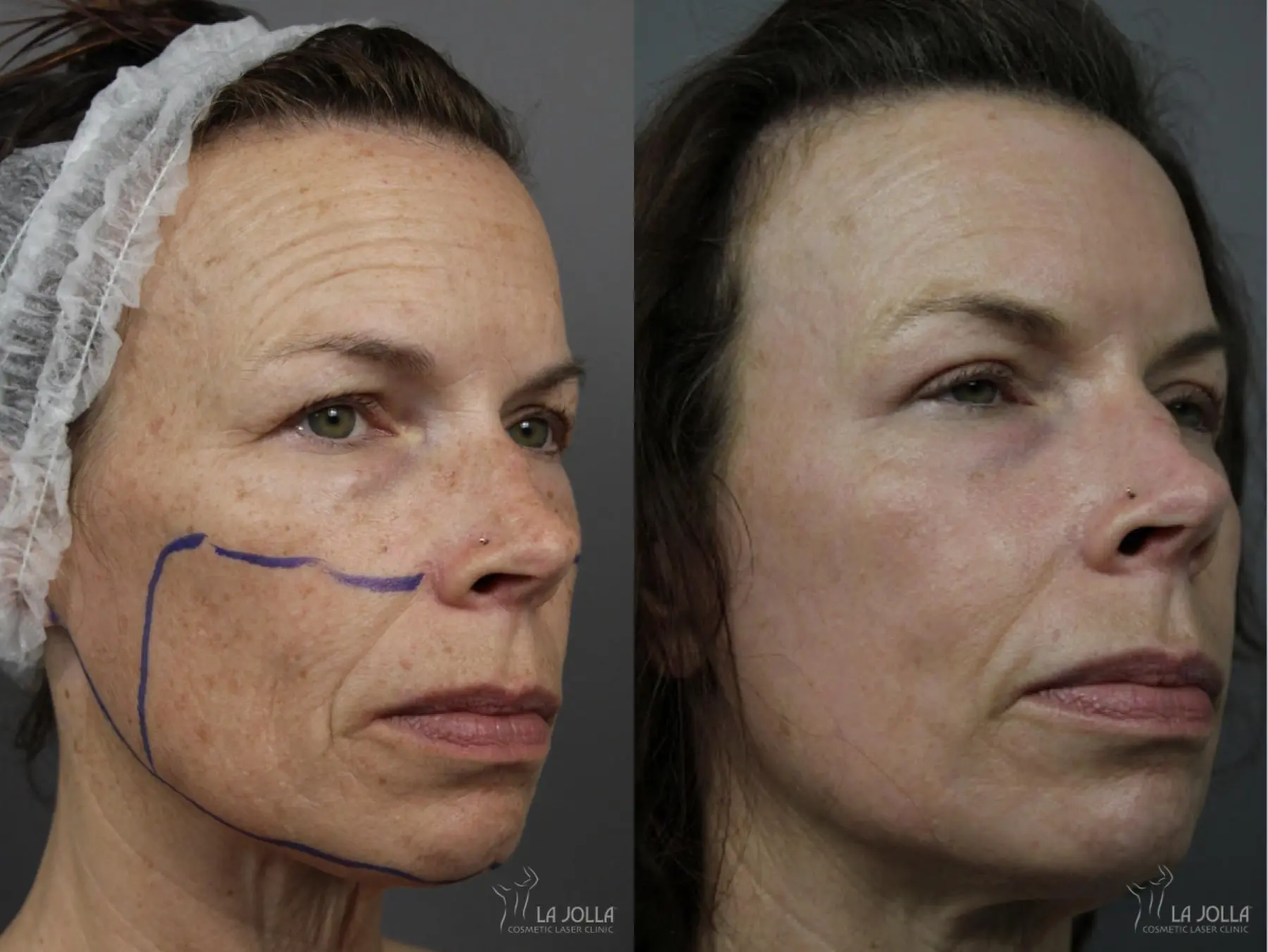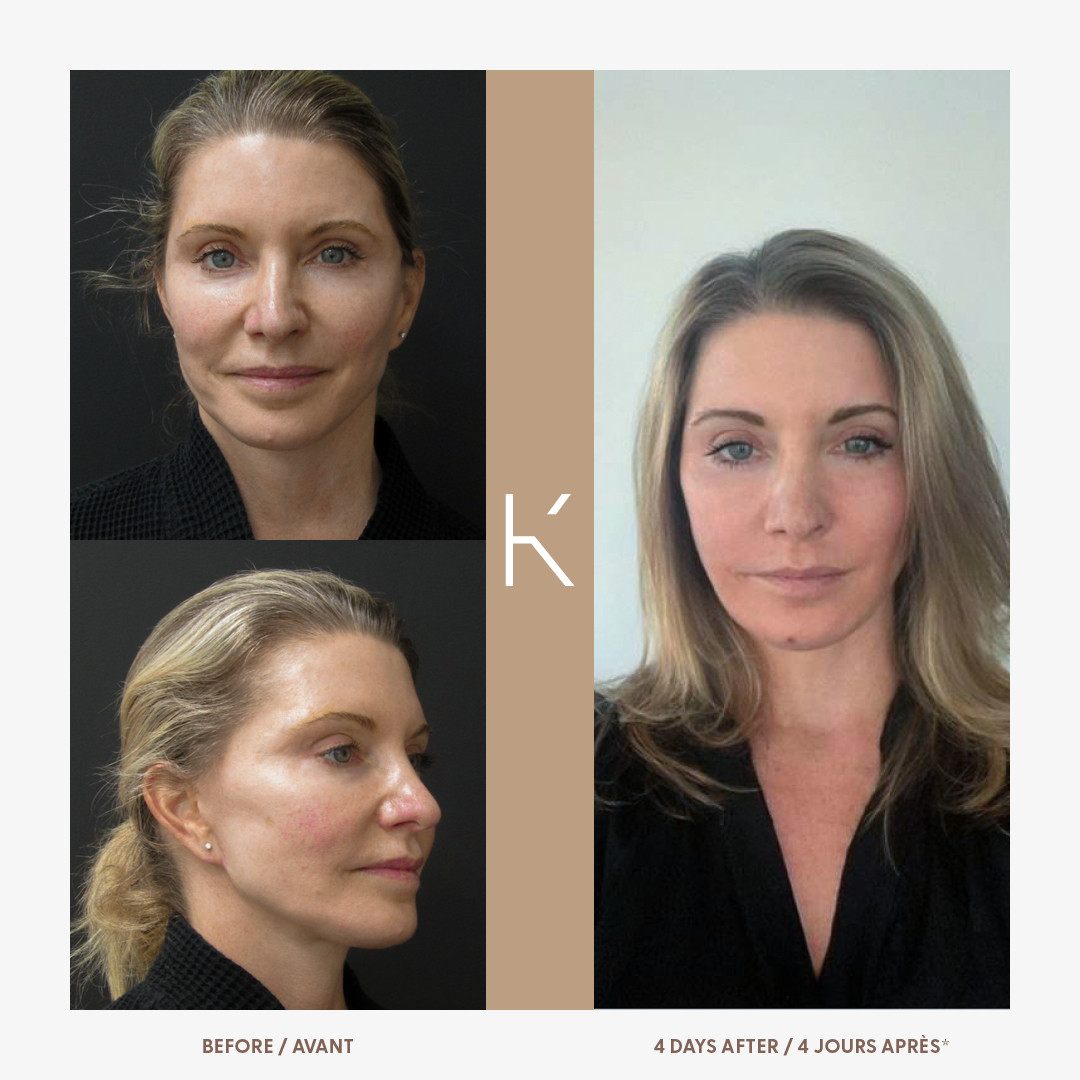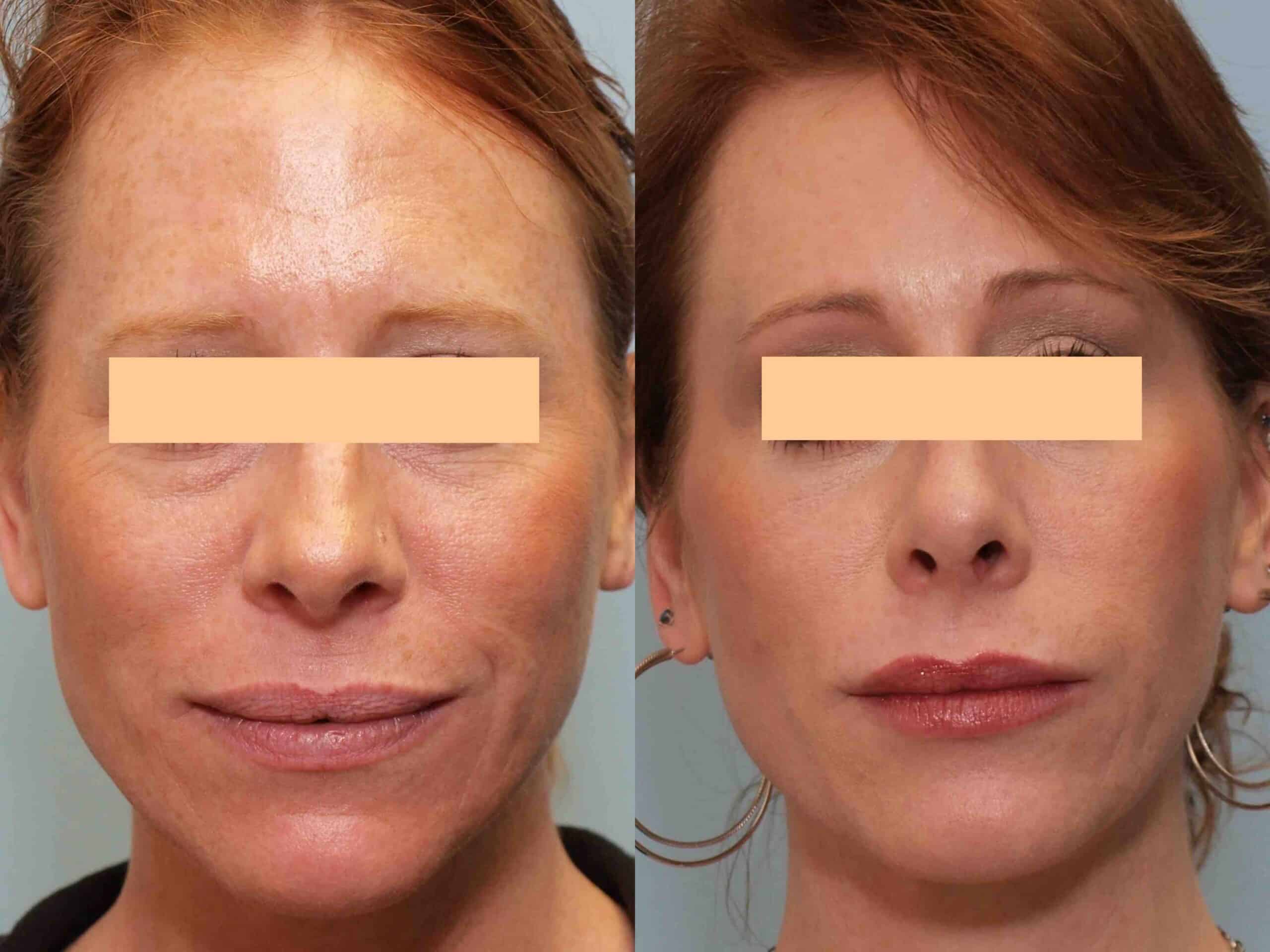Profractional Laser: See The Incredible Before And After Skin Transformation
Imagine waking up one day and truly feeling happy with your skin, perhaps even seeing those bothersome lines, spots, or scars fade away. It’s a feeling many of us dream about, and for some, a profractional laser treatment can actually make that vision a reality. This isn't just about looking different; it's about feeling a fresh confidence in your own skin, something that, you know, can really change your day-to-day outlook.
People often look for ways to bring back a youthful glow or to smooth out the visible signs of skin that's seen a bit of life. Whether it’s from sun exposure, old acne, or perhaps even a past injury, our skin can show a lot of stories. A profractional laser procedure, it turns out, is a rather effective way to help restore a healthy, more vibrant complexion, gently working to erase those visible marks that might make us feel a little less than our best.
In this piece, we’re going to really explore the world of profractional laser treatment. We’ll look at what it involves, what you can expect during recovery, and, most importantly, we'll talk about the truly amazing profractional laser before and after changes that people have seen. It’s a bit like uncovering a secret to smoother, more even-toned skin, and honestly, you might be quite surprised by the possibilities.
Table of Contents
- What is Profractional Laser?
- What Can Profractional Laser Treat?
- Getting Ready: Before Your Treatment
- The Treatment Experience
- Profractional Laser Recovery: What to Expect
- Seeing the Change: Profractional Laser Before and After
- Profractional Laser Versus CO2 Laser
- Is Profractional Laser Right for You?
- Maintaining Your Radiant Look
- Frequently Asked Questions
What is Profractional Laser?
So, what exactly is this profractional laser treatment that people are talking about? Well, it's a kind of laser that really helps to resurface your skin. It works by creating these tiny, tiny channels, almost like microscopic pathways, in your skin's surface. This process, you know, is pretty clever because it doesn't treat the whole area all at once. Instead, it leaves healthy skin around those little channels, which, as a matter of fact, helps speed up the natural healing process.
This clever method truly encourages your body's own healing powers. When those tiny channels are made, your skin gets a signal to start producing new collagen and elastin. These are the things that actually give your skin its firmness and elasticity, so getting more of them is a big deal. This whole process, in a way, leads to the regeneration of damaged skin tissue, helping to bring out a fresher, more youthful appearance.
Many places use the Sciton® system for profractional laser treatments. Choosing a system like Sciton, you know, often means you're getting a brand that's known for delivering good outcomes and really puts patient comfort first. It's a comprehensive approach, basically, that can help with various skin concerns, from the small lines that appear around your eyes to more noticeable acne scars. It's quite a versatile tool, honestly, for skin improvement.
What Can Profractional Laser Treat?
One of the really good things about profractional laser treatment is just how many different skin issues it can help with. It's designed to make your skin look and feel better by minimizing wrinkles and pigmentation. It also does a very good job at improving your skin's overall tone and its texture, which, you know, can make a huge difference in how your skin looks every day.
For example, it's really good for treating scars. If you have scars from an injury, or perhaps surgery, or even those lingering marks from past acne, this laser can work to reduce or minimize that scar tissue. It truly helps to improve how those scars appear, making them less noticeable and, in some respects, blending them more with your surrounding skin.
Beyond scars, it’s also quite effective for other common skin concerns. This includes those fine lines that can start to show up, and also deeper wrinkles. Sun damage, which can lead to skin discoloration, brown spots, or what some call liver spots or lentigines, can also be addressed. Even seborrheic keratosis, which are those somewhat raised, brown, sometimes waxy-looking spots, can be treated with this laser, which is pretty amazing when you think about it.
Getting Ready: Before Your Treatment
Preparing for your profractional laser treatment is, you know, a pretty important step to make sure everything goes smoothly and you get the best results. One of the absolute main things to keep in mind is avoiding any kind of sunburn or suntan for about four weeks before your laser session. This is really, really important, as a matter of fact.
Treating skin that's tanned or sunburnt can, basically, increase the chance of getting blisters or even permanent changes in your skin's color. So, prolonged sun exposure is something you definitely want to stay away from for a good month before your treatment, and also for about four weeks after. It’s a simple rule, but it really helps keep your skin safe and happy.
When you actually arrive for your profractional laser treatment, the team will, you know, typically apply a topical numbing cream to the area that’s going to be treated. This is all about making sure you feel as comfortable as possible during the procedure. It's a thoughtful step that really helps manage any sensations you might feel, so you can just relax a little bit.
The Treatment Experience
So, what’s it actually like when you're getting the profractional laser treatment? Well, it’s often described as a warm sensation. You might also feel something a bit like small pebbles gently hitting the surface of your skin. It’s not usually painful, but it's definitely a sensation you'll notice. The numbing cream, as I was saying, really helps with this, making it quite tolerable for most people.
The good news is that the treatment itself doesn’t take a very long time. It usually lasts around 20 minutes, which, you know, is pretty quick when you think about the potential for skin improvement. For some people, especially if they are getting more extensive or deeper resurfacing, like around the mouth or under the eyes, additional comfort measures might be used.
For instance, some individuals have had oral sedation or even facial nerve blocks to help them feel completely at ease during the procedure. This kind of personalized approach means that your comfort is a big priority, and they really want to make sure your experience is as pleasant as it can possibly be. It’s all about making sure you feel good throughout the whole process, basically.
Profractional Laser Recovery: What to Expect
After your profractional laser treatment, your skin will, of course, need some time to heal and reveal its new look. The immediate recovery can vary a little bit from person to person, but generally, you'll see some initial changes in about 10 days. This is when the skin might be healing from the initial treatment, especially if you had something like a micropeel or more targeted resurfacing for things like brown spots or scars.
It’s important to remember that the full, truly transformative effects, the kind that make you say, "I couldn't be any happier with my skin now!", often take a bit longer to fully show themselves. Many people report seeing the best results, you know, after about three months of healing. This is because your skin is still working hard, producing that new collagen and elastin, and regenerating those damaged tissues.
During this recovery period, patience is key. Your skin is going through a significant change, and it needs time to do its work. You’ll want to follow all the aftercare instructions very carefully, which often includes continuing to avoid prolonged sun exposure for those four weeks after your treatment. This helps protect your delicate, newly resurfaced skin and ensures the best possible outcome.
Seeing the Change: Profractional Laser Before and After
This is, arguably, the most exciting part for many people considering profractional laser: actually seeing the difference. The "before and after" pictures really tell a story of transformation. It’s one thing to hear about the benefits, but it’s quite another to see real people, you know, who have experienced these changes firsthand. These photo galleries often feature actual patients who have given permission to share their journeys.
When you look at these pictures, you can really see how the profractional laser helps to minimize wrinkles, reduce pigmentation, and improve the skin's overall tone and texture. For instance, you might see dramatic improvements in acne scars, or how fine lines around the eyes or mouth become much softer. It's a powerful visual testament to what this treatment can achieve.
The community that supports these kinds of treatments often wants to show the beauty of the body through its changes, and this really applies here. Whether it’s from aging, or perhaps past skin issues, seeing how profractional laser can restore a healthy, youthful complexion is truly inspiring. It really helps to set realistic expectations too, showing what's possible for different skin concerns. You can often find these images on clinic websites, like those featuring laser skin resurfacing results, which can be very informative.
Profractional Laser Versus CO2 Laser
When people think about skin resurfacing, they often hear about different types of lasers, and sometimes the question comes up: what’s the difference between profractional laser and, say, a CO2 laser? Both are used for skin rejuvenation, but they work in somewhat different ways, and, you know, understanding this can help you decide what might be a good fit for you.
Profractional laser, as we've talked about, creates those thousands of tiny, microscopic channels in the skin. It's a "fractional" treatment because it only treats a small fraction of the skin at a time, leaving surrounding tissue untouched. This method, basically, stimulates the body’s natural healing response and encourages new collagen and elastin production, leading to regeneration of damaged skin tissue.
CO2 lasers, on the other hand, are typically more aggressive. They remove the entire outer layer of skin, which can lead to more dramatic results for very deep wrinkles or severe sun damage. However, because they treat the whole surface, the recovery time for a CO2 laser is generally longer and can be more intense than for a profractional laser. It’s a trade-off, really, between intensity of treatment and recovery period, and your doctor can help you figure out what’s best for your specific skin concerns.
Is Profractional Laser Right for You?
Deciding if profractional laser treatment is a good choice for your skin is, you know, a personal process. It's really about understanding what it can do and setting expectations that are, well, realistic. This treatment is incredibly effective for addressing a range of issues, from wrinkles and fine lines to various types of scars, like those from acne or surgery, and also sun damage and pigmentation concerns.
It’s important to have a chat with a skin professional who can look at your specific skin type and concerns. They can help you learn how to avoid complications, and what to expect during your healing journey. For instance, if you have very tanned skin, or if you're prone to certain skin conditions, they might advise a different approach or suggest specific precautions. This kind of conversation is quite important, honestly.
The goal is to get the radiant, youthful skin you truly deserve with profractional laser treatment. People who have undergone the procedure often share their experiences, talking about the cost, the recovery time, and if they felt it was worth it. Reading these real-person reviews can be very helpful, as a matter of fact, in getting a feel for what others have gone through and what kind of results they achieved. It's about finding a solution that makes you feel great about your skin, and this treatment could be that for you.
Maintaining Your Radiant Look
Once you’ve gone through the profractional laser treatment and your skin has healed, the next step is, you know, keeping that fresh, healthy look. Maintaining your skin’s health for lasting benefits is a very important part of the whole process. It’s not just a one-and-done thing; it’s about embracing habits that support your skin’s new vitality.
One of the most crucial things, as we mentioned earlier, is continued sun protection. Prolonged sun exposure is something to avoid, especially after your treatment, but really, it's a good habit for life. Sunscreen, hats, and seeking shade are your best friends in preserving your skin’s improved tone and texture. This helps prevent new sun damage and keeps those brown spots from coming back, which, you know, is pretty essential.
Beyond sun protection, a good daily skincare routine will also play a big part. This might involve gentle cleansers, moisturizers, and perhaps serums recommended by your skin care professional. These practices help to nourish your skin and support that new collagen and elastin production, making sure your results last as long as possible. It’s about giving your skin the ongoing care it deserves, basically, to keep that beautiful transformation shining through.
Frequently Asked Questions
How long does Profractional laser take to heal?
The initial healing time for profractional laser treatment is usually about 10 days, during which your skin will be actively recovering. However, the full, most noticeable improvements, like the complete regeneration of damaged skin tissue and the full effect of new collagen production, often take around three months to become truly apparent. It’s a process, you know, that really unfolds over time as your skin continues to renew itself.
What does Profractional laser treat?
Profractional laser is quite versatile and can treat a range of skin concerns. It’s really good for minimizing wrinkles and fine lines, reducing pigmentation issues like brown spots or sun damage, and improving overall skin tone and texture. It's also very effective at treating various types of scars, including those from acne, injuries, or previous surgeries, helping to make them much less visible. So, it's a pretty comprehensive solution for many common skin challenges.
Is Profractional laser painful?
Most people describe the sensation during a profractional laser treatment as a warm feeling, sometimes with a sensation like small pebbles gently hitting the skin. Before the procedure, a topical numbing cream is applied to the treatment area to ensure your comfort. For more extensive treatments, some individuals might even receive oral sedation or facial nerve blocks to help them feel completely at ease. So, while you'll feel something, it’s generally not described as painful, and measures are taken to keep you comfortable.
Learn more about profractional laser treatments on our site, and for more details on skin rejuvenation, you can also visit our dedicated page.

CO2 Laser Before & After Gallery: Patient 7

Laser | Montreal, Westmount Clinic

Laser Resurfacing Gallery - Dr. Paul Vanek, MD